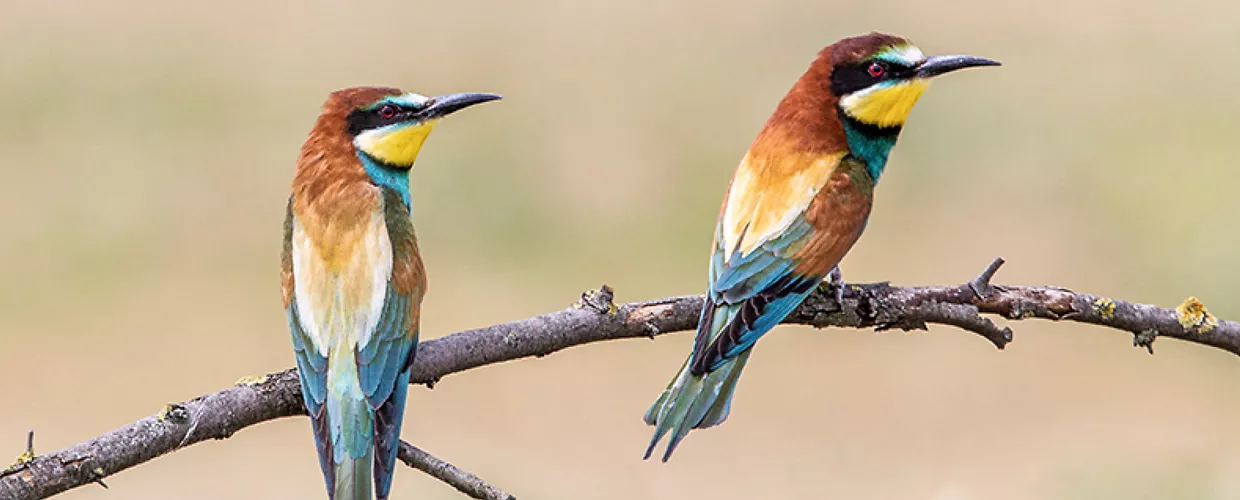This content was automatically translated. View the original text.

Overview
They are not eye-catching, but in the absolutely flat horizon of the Po Delta they stand out like little islands in the expanse of wheat fields swaying under the sea breeze. They are the fossil dunes of Sant'Ariano in Polesine, between San Basilio and Grillara: "dunes", because they are sandy formations; "fossil", because they are the evidence of the ancient coastline. It is well known that the Po river creeps further and further into the Adriatic Sea, widening into a fan shape. Over the centuries the sediments carried by the current have formed new lands and here is tangible proof of this process. From the time of the Etruscans to the present day, in fact, as many as seven coastlines have been identified, each with a belt of sand dunes. With the passing of time almost all of these formations have been destroyed, partly through natural erosion, but mainly to make room for agriculture and to supply the building industry with raw material. The few fossil dunes that have been fortunately spared should therefore be considered precious testimonies to the past, and as such are today protected.
In fact, at the southern end of Sant'Ariano there is a small medieval church dating back to the 9th-10th century: San Basilio. In those days the only thoroughfare in the vague lands of the Po Delta was the via Popilia, a coastal road traced by the Romans between Adria and Ravenna. At that time it was used by pilgrims travelling down to Rome. The small church, built by the Benedictines of the nearby Pomposa Abbey, stands on the site of an early-Christian place of worship, dating back to the 4th century AD. Thus it turns out that at that time San Basilio was an important trading post for a large tract of territory: goods arrived from the Mediterranean and from here went up to the continent, and vice versa. As you can see, the fossil dunes of Sant'Ariano tell us a story that goes well beyond their naturalistic value!
A simple brick building which harmonises well with the ancient Church of San Basilio: it's the San Basilio Cultural Centre, which houses the Archaeological Museum. The oldest exhibits are locally-produced ceramics found in a settlement dating back to the 6th-5th centuries B.C., which hark back to the time when the Palaeovenetian civilisation came into contact with the Greeks and Etruscans. The centrepiece of the collection, however, are the finds from the archaeological excavation of a Roman villa, a few hundred metres from San Basilio, documented up to the 5th century AD: architectural elements, oil lamps of various shapes, fine tableware, blown-glass bottles and cups, needles and pins made of bone or horn... There is also a numismatic section, dedicated to a "treasure trove" of coins brought to light after two millennia during excavation.
The concept of "island" applies perfectly to the fossil dunes of the Po Delta and it is the naturalist who explains why. A coastal dune, in fact, goes through an initial phase in which it is "white", i.e. made up only of sand. "White" dunes move, albeit almost imperceptibly, under the push of the wind. With the passing of time the dunes become "grey". This happens when certain pioneer plants take root, thus beginning a process of consolidation, which in the long run sees the appearance of shrubs such as the juniper and finally trees such as the holm oak (an evergreen Mediterranean oak) or the maritime pine (the latter, however, planted by human hands). And with the vegetation, an increasingly complex fauna, from insects to birds and other animals, starts to settle here. At the end of this process that takes millennia, the "fossil dunes" are transformed into an island of biodiversity, in the monotonous sea of the Polesine countryside.
It takes a bit of luck, but perseverance could be rewarded with a couple of memorable sightings. The first and most likely is the European bee-eater (Merops apiaster), a small bird with multicoloured plumage which hunts insects in flight - bees and wasps mostly, as its scientific name suggests, but also dragonflies and butterflies - and hold them in its beak when it then rests on bare branches or on light wires. The second possible sighting, even more exciting, could be the sea jay (Coracias garrulus), similar to a crow but with plumage in which a stunning turquoise prevails. Both are long-distance migrants: from the Po Delta, where they nest, often in the fossil dunes of Ariano, to Equatorial Africa, where they winter.
Credit to: Vis M
45012 San Basilio RO, Italia